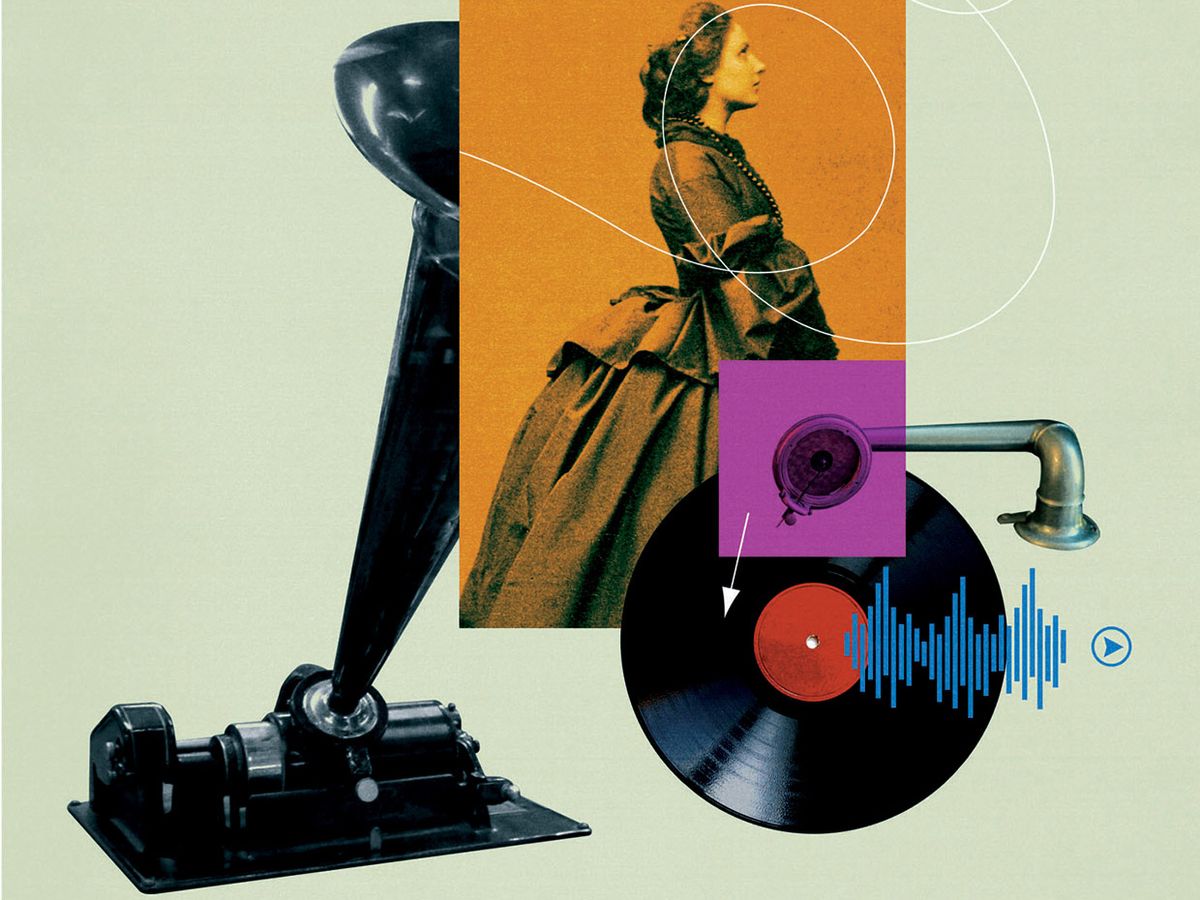When Thomas Edison died in 1931, at 84, he held nearly 1,100 patents in the United States and more than 2,300 patents worldwide. By far the most famous one was his patent for the lightbulb, but he came up neither with the idea of an evacuated glass container nor with the use of an incandescing filament. More fundamental was Edison’s conception, entirely de novo, of the complete system of electricity generation, transmission, and conversion, which he put into operation first in London and in lower Manhattan in 1882.
But for sheer originality bordering on the magical, nothing compares to Edison’s U.S. Patent No. 200,521, issued on 19 February 1878, for the first-ever way to hear recorded sound.
The phonograph was born out of the telegraph and telephone. Edison spent years trying to improve the former—most of his early patents were related to printing telegraphs—and he was intrigued by the latter ever since its introduction, in 1876. Edison got his first telephone-related patents in 1878. He noticed that playing a recorded telegraph tape at a high speed produced noises resembling spoken words. What would happen if he recorded a telephone message by attaching a needle to the receiver’s diaphragm, produced a pricked tape, and then replayed that tape? He designed a small device with a grooved cylinder overlaid with tinfoil that could easily receive and record the motions of the diaphragm. “I then shouted, ‘Mary had a little lamb,’ etc.,” Edison recalled. “I adjusted the reproducer, and the machine reproduced it perfectly. I was never so taken aback in my life. Everybody was astonished. I was always afraid of things that worked the first time.”
Soon he took the phonograph on a tour, even into the White House. His advertisement called it (incongruously) “Thomas Edison’s Final Achievement,” and the inventor’s wish was that every American family might eventually buy the machine. He greatly improved its design during the late 1880s by using wax-coated cylinders (originally conceived by colleagues of Alexander Graham Bell) and a battery-powered electric motor, marketing it as a recorder of family voices and a music box as well as a dictation machine for businesses and as an audio book for the blind.
However, sales were never spectacular. Wax cylinders, especially the early versions, were fragile, hard to make, and therefore expensive. By 1887, the American Graphophone Co. had obtained the patent to a rival version of the device, yet it remained costly.
During the 1880s, Edison was preoccupied with introducing and improving electric lights and inventing and designing generation and transmission systems. But in 1898 he began selling the Edison Standard Phonograph for US $20, or about $540 in today’s dollars. A year later came an inexpensive Gem model for just $7.50 (Sears & Roebuck was selling an iron bed for about that much). But by the time Edison was mass-producing unbreakable celluloid cylinders, in 1912, shellac disc records for the gramophone (first patented by Emile Berliner in 1887) had taken over.
Edison always found it hard to let go of his early inventions. The last phonograph cylinders were made in October 1929. Flat discs with a spiral groove, used on the gramophone, remained dominant for most of the 20th century, until new modes of sound recording began coming in quick succession. U.S. sales of LPs peaked in 1978, compact cassettes peaked a decade later, and then CDs—introduced in 1984—peaked in 1999. Those sales were cut in half just seven years later, and they are now surpassed by music downloading, including free wireless options.
How would Edison have regarded these dematerialized methods for reproducing sound?
This article appears in the February 2018 print issue as “February 1878: The First Phonograph.”
